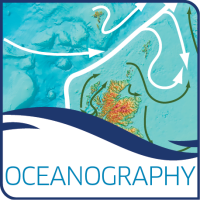Marine Scotland is the custodian of a hydrodynamic model of Scottish continental shelf waters, the Scottish Shelf Model (SSM). The wider Scottish Shelf model (SSM) domain covers the Scottish continental shelf at relatively high resolution (typically 1 km node spacing at the coastline) but also covers most of UK waters, the North Sea and the English Channel. The domain extends in longitude from approximately 13° W to 13° E, including the Baltic Sea. The Wider SSM version 2.02 is a full year future climatological run, which represents average conditions for 2038-2062 with a 1993 tidal component. The output from the model is primarily held in netCDF files at hourly spatial resolution on an unstructured grid, but reduced precision datasets can also be made available.
Data from this output is too large to serve up efficiently on the Marine Scotland Data Portal.
Please contact oceanography@marlab.ac.uk to request data and arrange methods of transferring the data (such as hard disk drive).
Data and Resources
| Field | Value |
|---|---|
| Publisher | |
| Modified | 2020-01-07 |
| Release Date | 2019-09-03 |
| Identifier | 35c1f17e-dd67-4cc5-b3a8-3a947c2d3825 |
| Spatial / Geographical Coverage Area | POLYGON ((-15.5126953125 47.974625159893, -15.5126953125 62.134296682618, 10.1513671875 62.134296682618, 10.1513671875 47.974625159893)) |
| Language | English (United Kingdom) |
| License | UK Open Government Licence (OGL) |
| Data Dictionary | The SSM is an implementation of the Finite Volume Community Ocean Model (FVCOM). FVCOM was developed by the University of Massachusetts-Dartmouth, USA, by Chen et al. (2003) and is still actively being developed. The future climate forcing for the 2038-2062 climatological model run was derived from one single projection (one single model and one future emission scenario): the Hadgem2-ES forced by the RCP8.5 scenario. HadGEM2-ES (The HadGEM2 Development Team, 2011) is a coupled Earth System Model that was used by the Met Office Hadley Centre for the CMIP5 simulations. The future climate forcing (atmospheric and boundaries) was calculated using a delta-change approach, i.e. by perturbing the present forcing with a multiplicative or an additive correction, that is a function of the future climate change forcing (based on Hadgem2) in relation to its present day control (based on ERA-Interim data, Dee et al. 2011). The river runoff volume fluxes were not perturbed. A climatology for 1962-2011 was used, and this was obtained from the Centre for Ecology and Hydrology (CEH) Grid-to-Grid (G2G) model (Bell et al. 2007, Cole and Moore 2009). For a full description of these data see De Dominicis et al. (2018). For a description of the unperturbed present day climatology see De Dominicis et al. (2017) http://doi.org/10.7489/12037-1. The data are formatted as netCDF 64-bit offset. Published papers and reports related to the data: Bell, V. A., Kay, A. L., Jones, R. G., & Moore, R. J. (2007). Development of a high resolution grid-based river flow model for use with regional climate model output. Hydrology and Earth System Sciences. https://doi.org/10.5194/hess-11-532-2007 Cole, S. J., Moore, R. J. (2009). Distributed hydrological modelling using weather radar in gauged and ungauged basins, Adv. Water Resour. 32 (7) 1107-1120. De Dominicis, M., O’Hara Murray, R., & Wolf, J. (2017). Multi-scale ocean response to a large tidal stream turbine array. Renewable Energy, 114, 1160–1179. https://doi.org/10.1016/j.renene.2017.07.058 De Dominicis, M., Wolf, J., & O’Hara Murray, R. B. (2018). Comparative effects of climate change and tidal stream energy extraction in a shelf sea. Journal of Geophysical Research-Oceans. https://doi.org/10.1029/2018jc013832 Dee, D. P., Uppala, S. M., Simmons, A. J., Berrisford, P., Poli, P., Kobayashi, S., et al. (2011). The ERA-Interim reanalysis: configuration and performance of the data assimilation system. Quarterly Journal of the Royal Meteorological Society, 137(656), 553–597. https://doi.org/10.1002/qj.828 Edwards, K. P., Barciela, R., & Butenschön, M. (2012). Validation of the NEMO-ERSEM operational ecosystem model for the North West European Continental Shelf. Ocean Sci. https://doi.org/10.5194/os-8-983-2012 O’Dea, E. J., Arnold, A. K., Edwards, K. P., Furner, R., Hyder, P., Martin, M. J., et al. (2012). An operational ocean forecast system incorporating NEMO and SST data assimilation for the tidally driven European North-West shelf. Journal of Operational Oceanography. https://doi.org/10.1080/1755876X.2012.11020128 The HadGEM2 Development Team: Martin, G. M., Bellouin, N., Collins, W. J., Culverwell, I. D., Halloran, P. R., Hardiman, S. C., et al.(2011). The HadGEM2 family of Met Office Unified Model climate configurations, Geoscientific Model Development, 4, 723-757 Wolf, J., Yates, N., Brereton, A., Buckland, H., De Dominicis, M., Gallego, A., & O’Hara Murray, R. (2016). The Scottish Shelf Model. Part 1: Shelf-Wide Domain. Scottish Marine and Freshwater Science, 7(3). https://doi.org/10.7489/1692-1 |
| Contact Name | Marine Scotland Science |
| Contact Email | |
| Public Access Level | Public |


